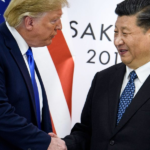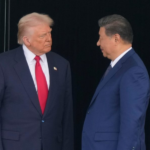“We’re in the early innings,” Klein said. “Of course, there’s going to be a ton of experiments that don’t work. But, like, has anybody ever started to ride a bike on the first try? No. We get up, we dust ourselves off, we keep experimenting, and somehow we figure it out. And it’s the same thing with AI.”
“We’re on that jagged frontier, which is we’re going to have some wins, and then we’re going to see that trough, and then we’re going to have some more wins,” she added.
The Microsoft executive, who shared that her own CEO challenged the senior leadership team to vibe code, emphasized that creating the right organizational culture matters more than the technology itself. “I think the study is really important because it actually reflects how many people feel right now, which is, is it really something that’s going to help me at work? Will it give me more joy and take away the toil?” Coleman said.
The conversation moved beyond defending failure rates to discussing what successful AI implementation actually requires. Coleman stressed the importance of building “AI fluency” across workforces and recommended a collaborative approach where technical experts work alongside business users. “How do we pair somebody that’s really good at either tech or continuous improvement, or some of these other sort of breakthrough ways to look at processes, and sit side-by-side and not make something for you, but do something with you so they could learn how to actually put AI into your workflow,” she said.
Coleman also pushed back against the notion that enthusiasm for AI diminishes the value of human work. “The more we talk about AI, the more people think that we don’t trust humans,” she said. “It’s really important that we’re talking about the criticality of humans in all these workflows. So, it’s about talking about what time I get freed up to do what I can uniquely do as a human.”
Wu outlined what she sees in successful customer deployments: a combination of top-down leadership support and bottom-up engagement from employees who understand daily workflows. “Leadership really enabling employees to test and build things safely obviously, but giving people the flexibility to experiment, try new tools, encourage them to use and build AI and help them build fluency,” she said. “Your companies are full of people that live and breathe the business and they’ve been around for decades, sometimes even centuries. And so for AI to be deployed really effectively, you need the tool to work really alongside the people who are doing the work every single day.”
Klein emphasized that experimentation doesn’t require enterprise-scale deployments. “We also see startups working side by side, bringing engineers and business leaders together,” she said. “Even if we’re in a regulated industry, we can be trying this in our personal lives and you know using on the weekend for nonsensitive information and just starting to see some of how this technology works because that’s really where you’re going to get the gains, and advancements, and big ideas.”
When an audience member asked what organizational conditions must be true for AI transformation to succeed, Coleman’s answer revealed the cultural shift she believes is necessary. “You have to be okay with failure. You have to be okay with messy,” she said. “We’re talking about the entry point of this transformation. You have to be okay with experimentation, and you have to be okay with that jagged up and down.”
She added that companies need to embrace what she called “a learning organization” where “managers need to stop assessing tasks and start teaching learning.” The key conditions, she said, include “vulnerability and courage” as organizations navigate technology that moves faster than previous transformations.
The discussion underscored a central tension facing enterprises: the risk of moving too slowly on AI adoption may ultimately exceed the risk of experimentation itself.
You can watch the full discussion from Fortune‘s Most Powerful Women event below:
For this story, Fortune used generative AI to help with an initial draft. An editor verified the accuracy of the information before publishing.









